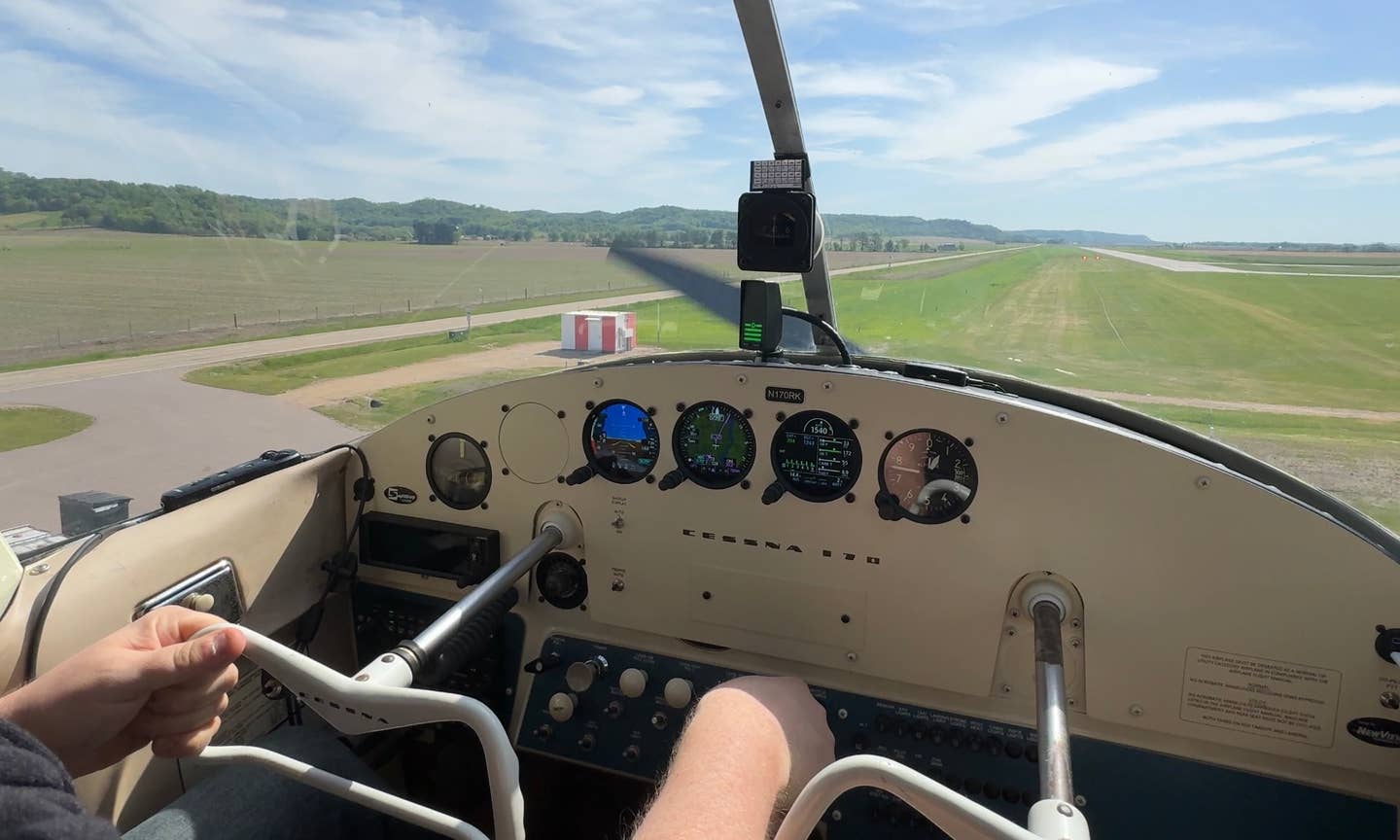Landing a Tonka Truck With Wings
Pillowy soft tundra tires require more forgiving, friendly alternatives to hard-surface runways.

Catering to taildragger pilots and anyone who enjoys grass, Tri-County Regional Airport (KLNR) in Lone Rock, Wisconsin, maintains a section that can be safer and more forgiving than pavement. [Courtesy: Adam Stiffler]
Growing up, I was a big fan of Tonka trucks. I’d build elaborate road networks in the backyard, complete with water crossings and challenging routes to and from various pretend worksites. Microscale overland adventures typically followed as I imagined myself in the driver’s seat negotiating precarious trails.
Today, things really aren’t much different. Sure, the Tonka trucks have long since been retired. And, yes, my machines of choice have evolved somewhat. But my Cessna 170B with 29-inch Alaskan Bushwheel tires perfectly embodies the spirit of Tonka truck fun and go-anywhere adventure. The combination of a sturdy taildragger and big tundra tires has enabled me to successfully negotiate muddy runways, snow, ice, and battered surfaces that would hobble many typical setups.
But while the massive, low-pressure tires indeed unlock access to destinations that would otherwise be off-limits, I’m learning that they can require some careful planning. Because the pliable rubber that turns rough surfaces into usable runways is so much softer than traditional, high-pressure tires, it’s a good idea to avoid using them on pavement and concrete. Doing so can prematurely wear the tires, resulting in corresponding wear on one’s bank account.
Accordingly, I now think twice before popping into airports that lack any grass options.
This is easier said than done, even with the plentiful grass options that abound in my home state of Wisconsin. After all, whether it’s fuel, maintenance, or a good restaurant you’re after, these things are often only available at fully paved airports.
Recently, I flew to Janesville, Wisconsin, to help judge a national flight competition sanctioned by the National Intercollegiate Flying Association (NIFA). Back in college, I competed for four years with the Western Michigan University Sky Broncos, and I try to serve as a volunteer judge whenever I can. Dating back to 1919, it’s pure, grassroots general aviation flying, with a strong emphasis on safety and precision, and has involved names like Earhart, Trippe, and Lindbergh.
I’d been looking forward to the event for some time but still I cringed as I gently touched down on the harsh, grooved concrete. On the ramp, I was careful to avoid sharp turns that brutally scrub the inside tire. As the tires cost over $2,000 each, I felt my efforts were warranted.
Fortunately, some progress is being made when it comes to expanding grass options at airports across the country. As is so often the case, the Recreational Aviation Foundation (RAF) is spearheading efforts to open more destinations to pilots interested in exploring rural strips. A couple of years ago, the organization worked with the FAA and got it to officially
acknowledge turf operations within runway safety areas. In other words, the FAA has now acknowledged that it can often make sense to conduct takeoffs and landings in grass areas immediately adjacent to hard-surfaced runways.
This isn’t just about saving money on tires. It’s also about selecting a runway surface that’s more forgiving of imperfectly aligned landings. Land a taildragger in a slight crab on pavement, and the tires will grab, setting you up for a nasty ground loop. Do the same on grass, and the tires will more likely slide slightly, making it a nonevent.
I wasn’t able to use a grassy area at Janesville for the flight competition. That airport has yet to designate any grass areas for landing, which is why I almost never fly to the fantastic airport restaurant located on the field. It’s a shame, considering it would be a short 15-to-20-minute flight for breakfast.
As it happens, my latest airport restaurant visit occurred just days after the flight competition at a rural, sleepy airport called Tri-County Regional (KLNR) in Lone Rock, Wisconsin. There, Sam’s Airport Diner proudly serves fantastic fare to pilots from Wisconsin and neighboring states. Best of all, the airport maintains a nicely mown strip of grass alongside the main runway, where taildragger pilots—or anyone with a preference for soft runways—may take off and land.
It’s an idea that’s gaining momentum. Ask any pilot at EAA AirVenture whether Wittman Regional Airport (KOSH) in Oshkosh has a grass option, and they’ll invariably point to the ultralight strip where the fantastic STOL demos take place. Some might mention the EAA’s nearby Pioneer Airport. But, in fact, Wittman Regional has designated a grass area adjacent to Runway 9-27 for takeoffs and landings. It’s on the south side of the runway, at the far western end, and is usable only upon request and when traffic conditions permit.
As I seek new and interesting places to take my grown-up Tonka truck with wings, I also continue to look for nice grass options like these. If an airport provides a more forgiving, tire-friendly, and legitimately safer alternative to its hard-surface runways, I’d certainly be interested in frequenting it.
And while, sure, I could simply switch back to standard, high-pressure tires, the stable, pillowy-soft experience of my big tundras is proving to be so much fun that it’s entirely worth the trouble.

Subscribe to Our Newsletter
Get the latest FLYING stories delivered directly to your inbox






